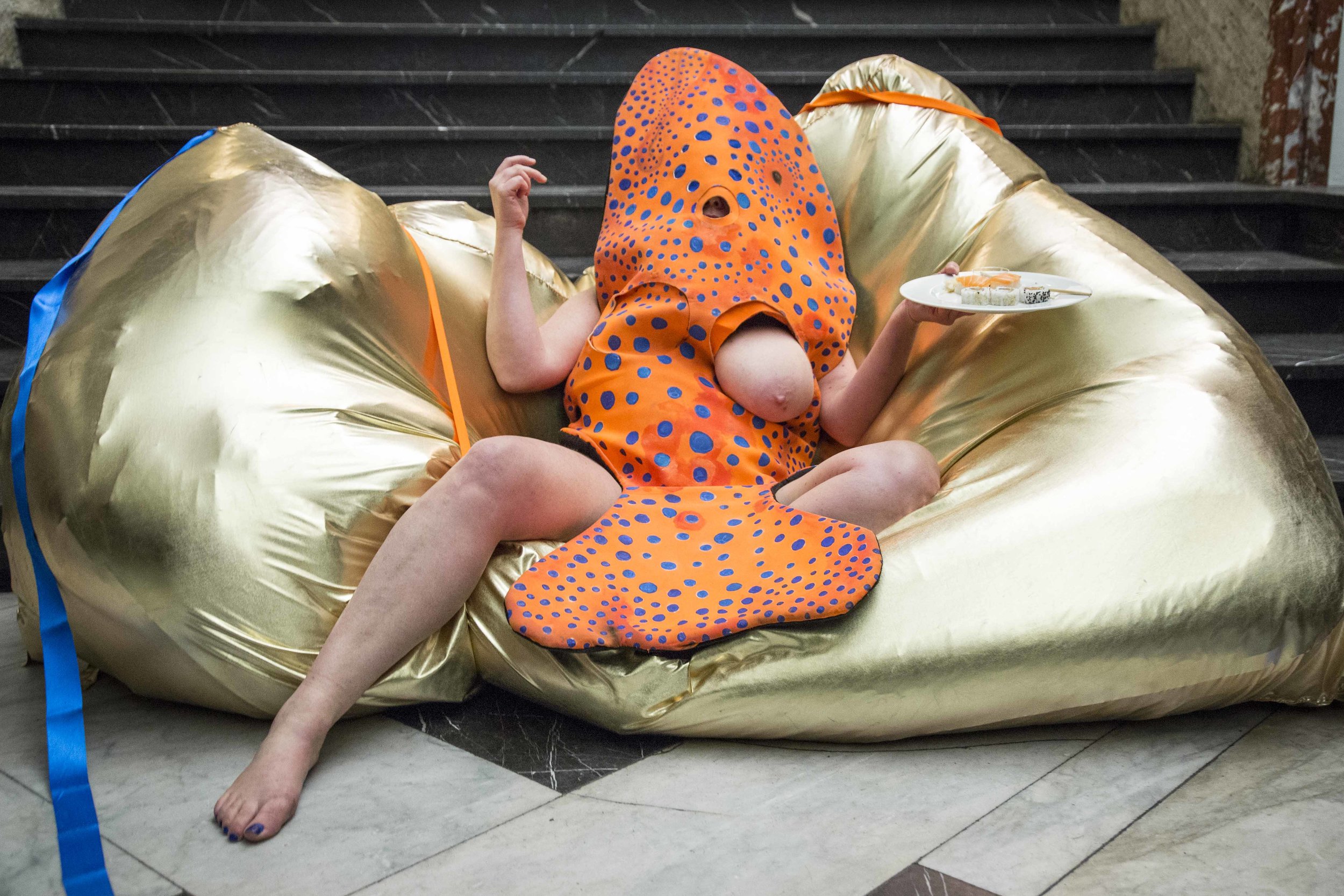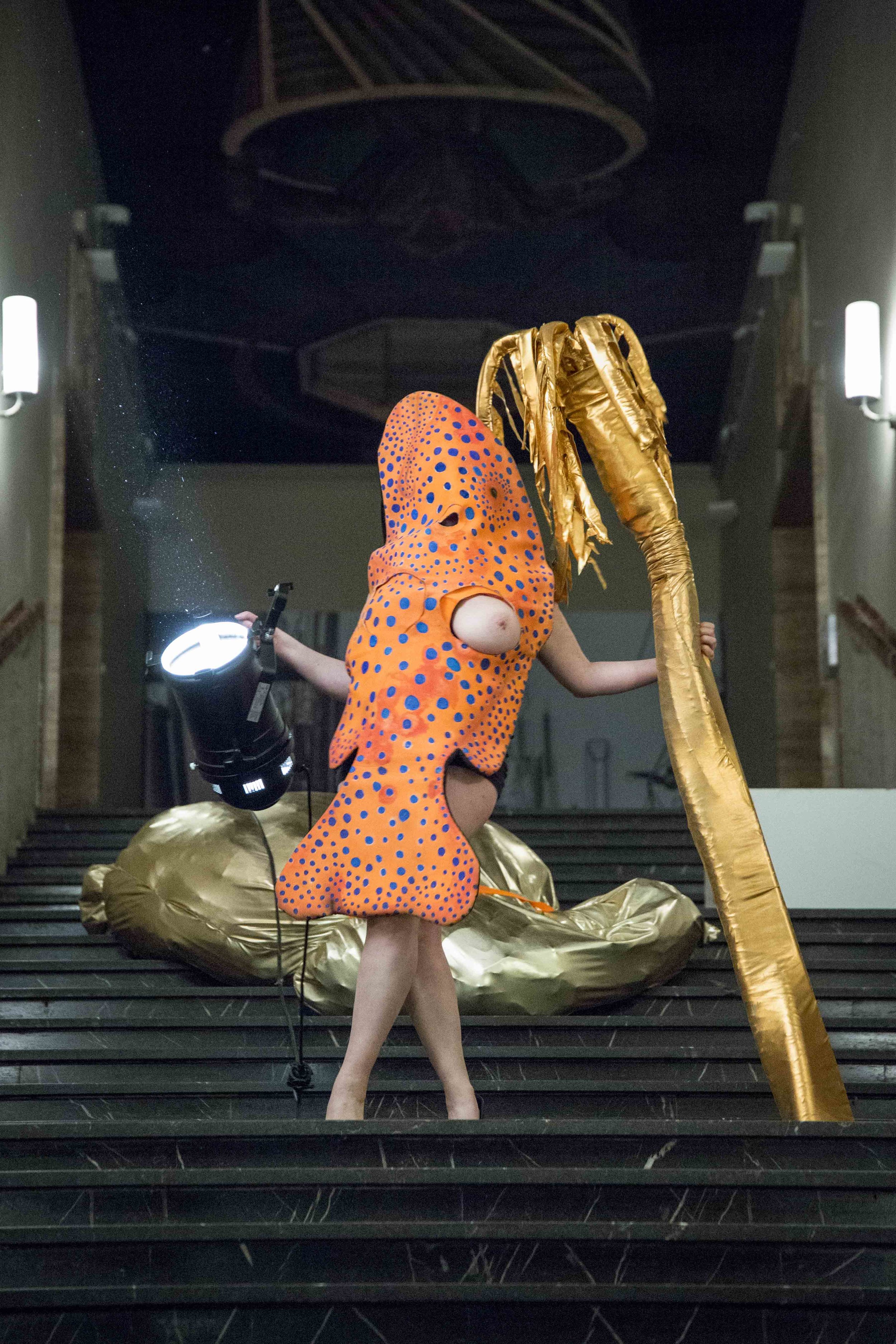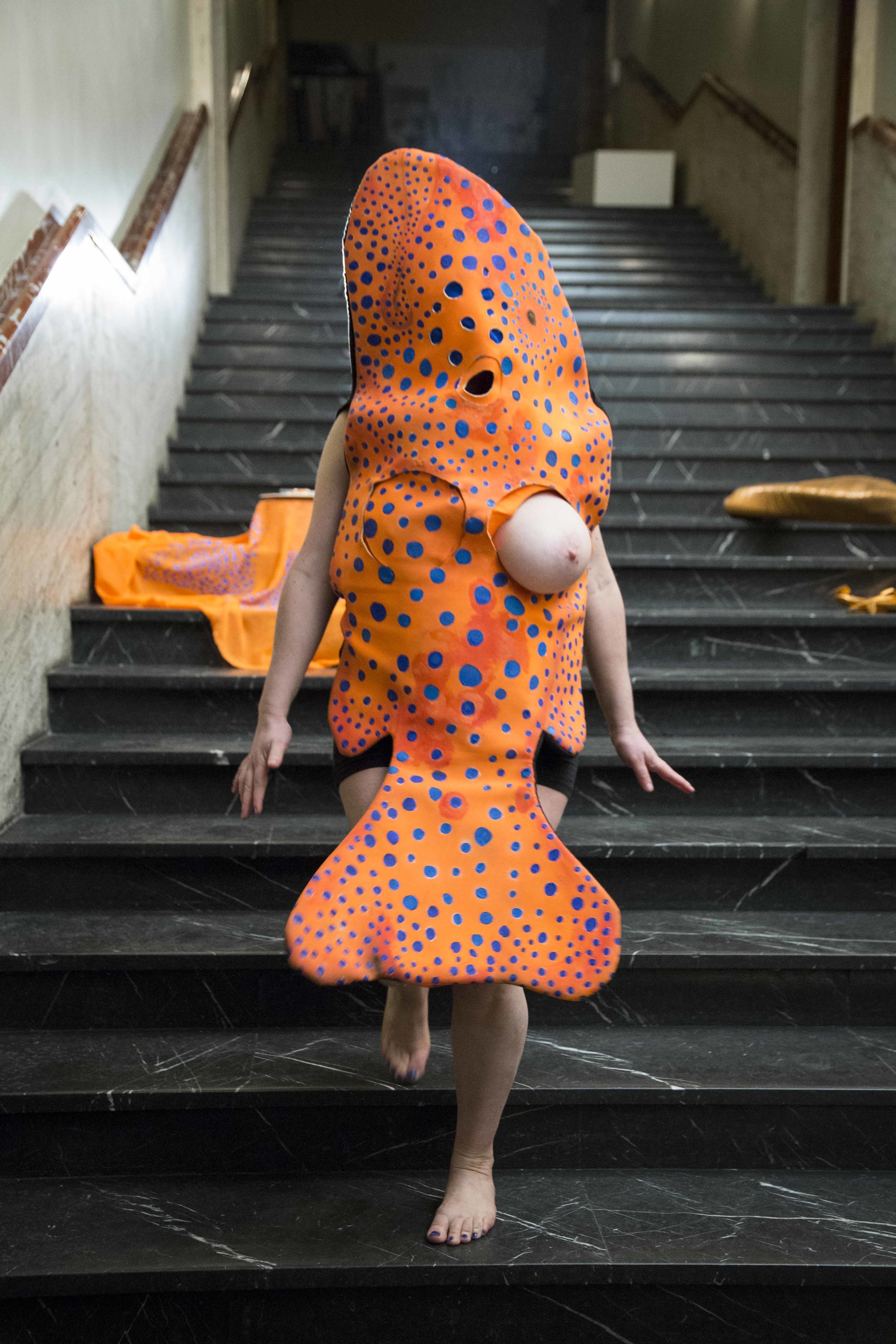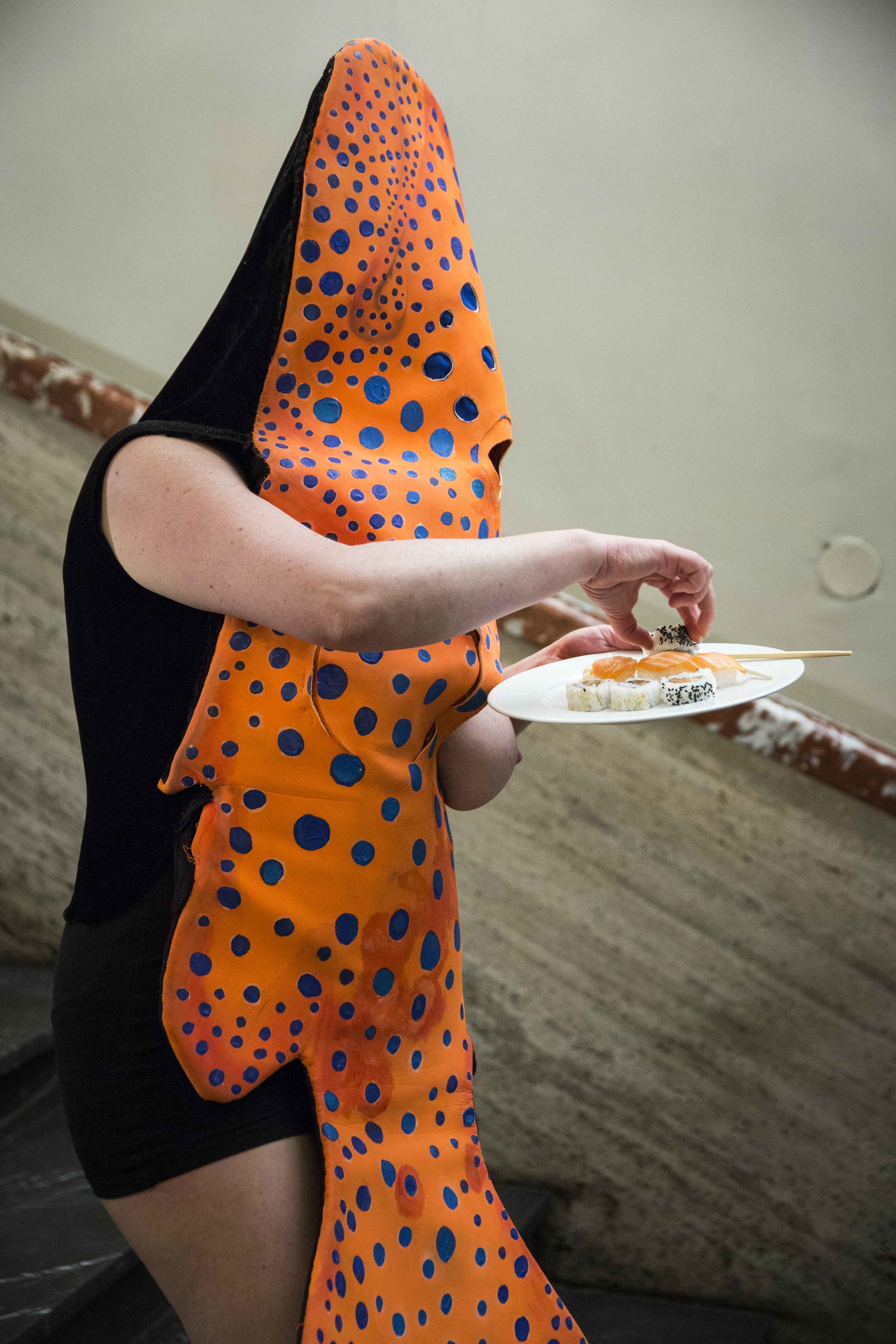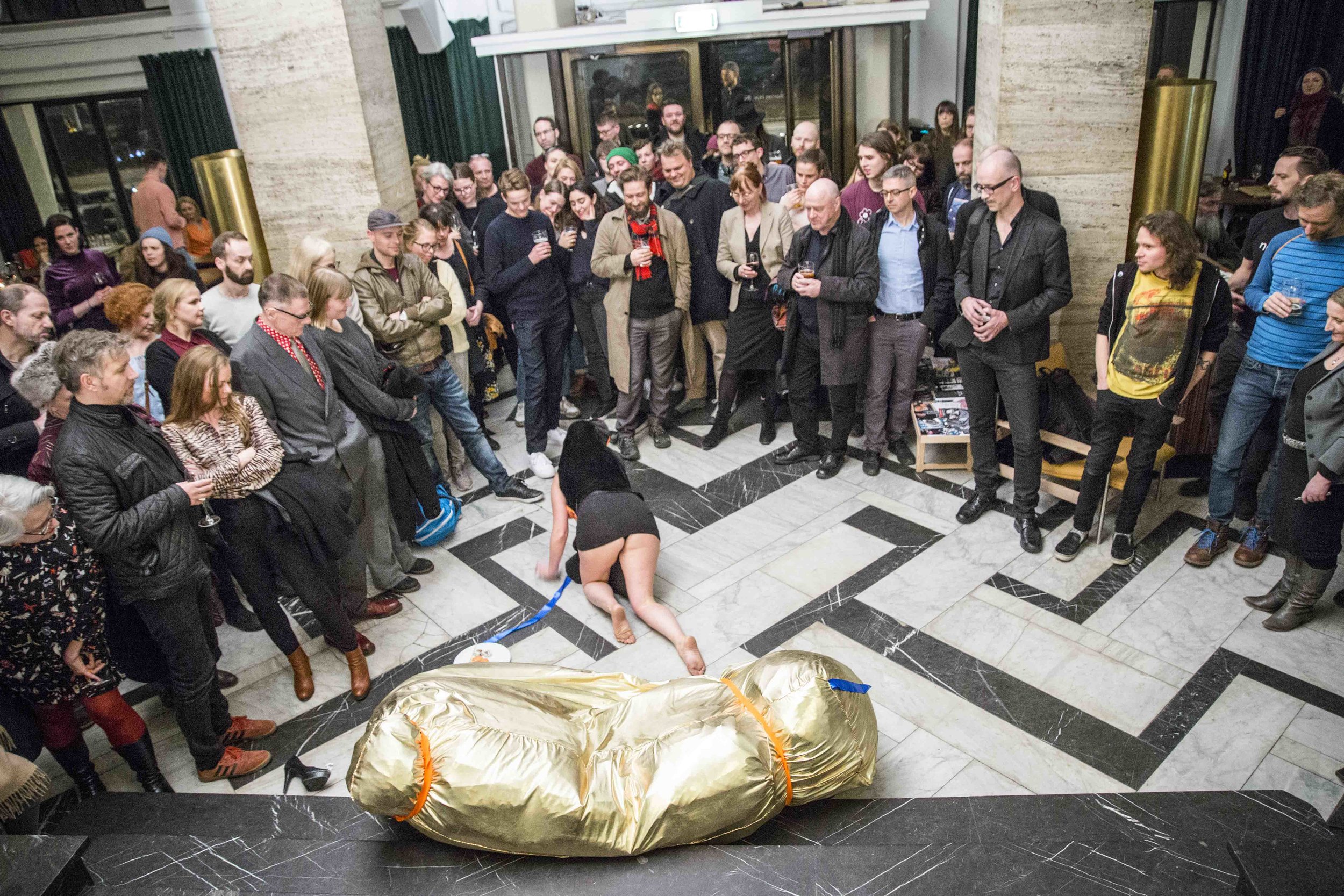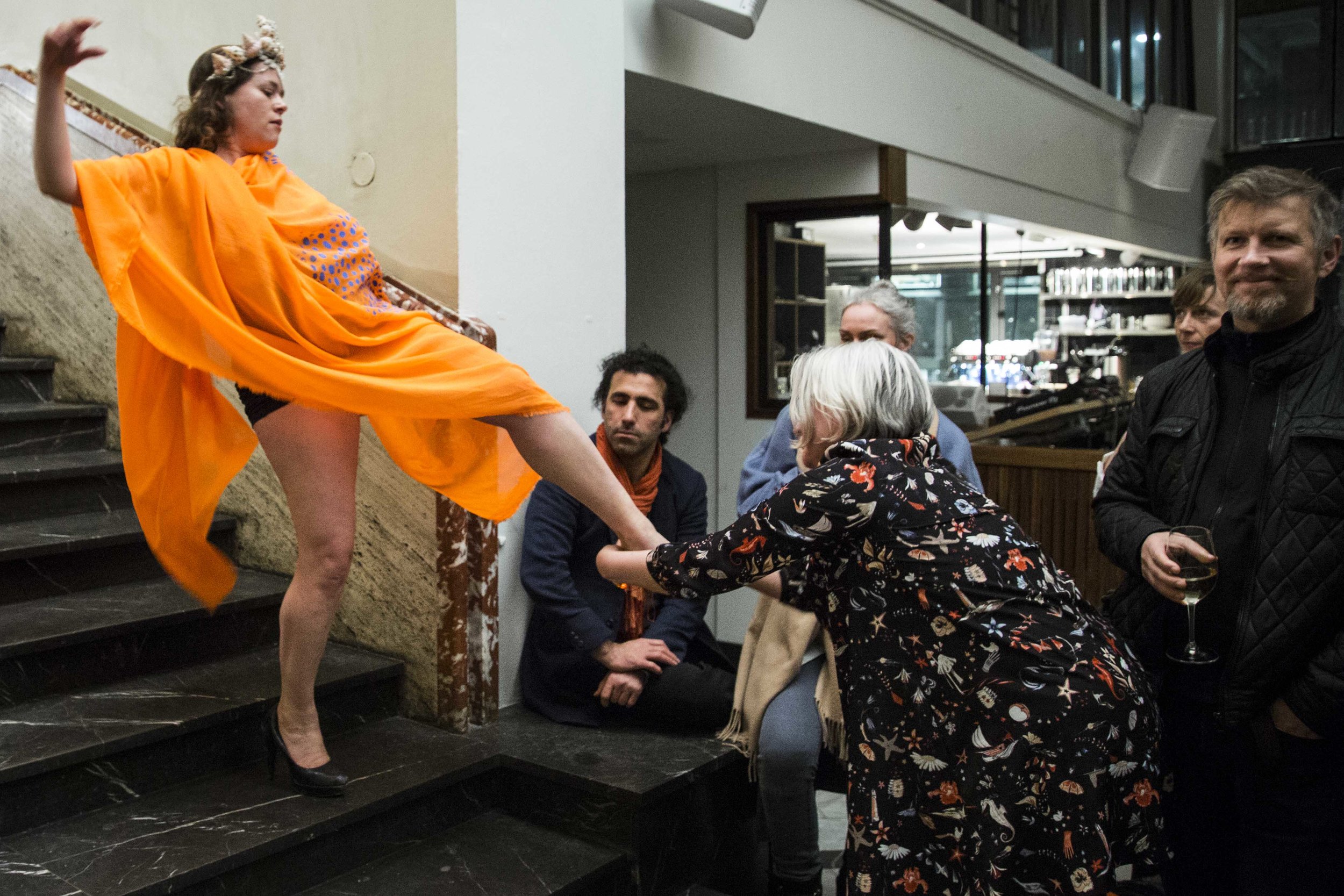Kirsty Kross "Art for the End Times"
Kirsty Kross is a performance artist from Australia. Since 2015 she has been based in Oslo and is a board member of Performance Art Oslo. In her artistic work Kirsty combines performance, music, drawing and elements of installation art. She often uses her body and her biographical background as a starting point for her work.
The following is a transcript from the conversation between Kirsty Kross and Zane Cerpina on March 23rd 2017, Oslo.
Zane Cerpina (EE): You performed at the Winter Solstice 2016 and you are one of the winners of the PNEK Art Prize 2016. First tell me what’s your background and how did you get into performing arts?
Kirsty Kross (KK): I studied art history, I did art teaching for six years in high school, but I was very young and got very frustrated about the tight rules, also on clothing. On weekends I started wearing crazy clothes and performing. I was dating a musician, and we thought: “What if we wore those crazy costumes on stage, would we get a lot of shows?” We called the band Team Plastique, we came to Berlin and toured around Europe for six years. The band was very performance oriented. I never wanted to pretend I was good at music. It was more about critiquing the role of women in the music industry - I often began shows looking sexy, but by the end I would look like a complete monster. In Berlin I did a Masters of Art in Context at the University of Arts. My last show outside Berlin was in Oslo, where I met my husband. I think I always dreamt about being an artist, but it happened in a very round about way.
“Do I actually care? ”
I was brought up very religious, in a religion that believes the end is coming soon. I also grew up with a lot of people in my family with mental illness. From a very young age I was really aware of people being crazy, and I was often concerned that I might go crazy too. I think adults often lack a sense of play. In the band I liked to create situations where people were allowed to be a bit looser and uninhibited. It has been a process to get the same feeling into performance art, as I am on my own. I think that having a sense of play and questioning what it means to be an adult is somehow the main part of my work.
“How much am I actually willing to sacrifice? ”
EE: You have performed in a fish costume several times in very different settings. What is the story of the fish?
KK: I actually made my first fish costume when I was 12 years old. I had to get dressed for a parade as something from the Australian state I come from - Queensland, which is the home of the Great Barrier Reef. The fish got rediscovered much later in Berlin, in my graduation piece which was an exploration of identity, as I realised that the fish has been a very important symbol in my family. For me the fish is something that expresses the need to fit in because I didn’t really fit into my family or mainstream society either. I love performance art because you can really intervene in any given context.
“I was brought up being under the shadow of the apocalypse”
EE: But with the many variations of the performance, what is the message? Is it political? What are you trying to tell to the audience?
KK: It is, but it is ambiguous. I think we live in a time where we have so much information and so many images. It is really hard to be noticed or remembered. We have very critical things happening economically, socially and ecologically. Yet people are addicted to their smartphones and are constantly distracted. So even if people know what is going on, they aren’t able to focus. The concept of attention span is changing rapidly, and we don’t know where this is going to lead us to. Concerning the ecological issues, I really care about the ocean and the Great Barrier Reef, for example, but then again look at me: I am an Australian living on the other side of the world and I fly constantly. I think artists want to make a difference, but they are also attached to their lifestyle as an artist. So I think for artists who take on these very global issues, they are often in this very contradictory bind. Am I just trying to make myself relevant? Do I actually care? How much am I actually willing to sacrifice? I think now it is so common, especially in Norway, to depend on art grants. So there is this need to make art relevant. Sometimes I wonder how much people really care about these issues and what can art actually do? The performance at the Kunstnernes Hus was titled Falling down the stairs in A major. It was about the attention economy and ecological problems as well as the rise of the one percent and fascism, the desire to be on top. As humans we are fucked by our general nature. We always want more, but we need to exist together. I guess humans are attracted to gold and glamour, all the things that monarchies created in the past. This elitism is maybe coming again, but there is also this catastrophic sense of foreboding. So in the performance, everything I did was slightly awkward, as if I was on the edge of disaster. This need to be perfect all the time, really messes things up for humans. Also in the performance I ate sushi. And the idea of the fish eating more fish, is what we are looking at now. People are really happy to exploit other people. I guess with the religion, I was brought up in the shadow of the apocalypse. And even if I am not that religious anymore I guess in some ways I am very affected.
www.kirstykross.com
